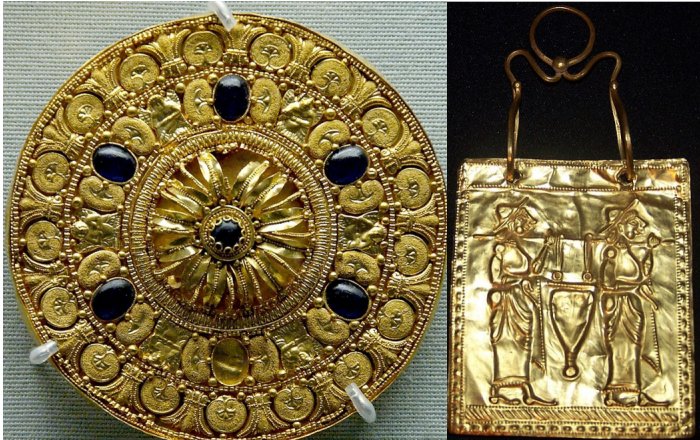Mysterious Etruscans: Skilled Sailors And Master Craftsmen
A. Sutherland - AncientPages.com - About 3000 years ago, a mysterious people called the Etruscans settled in a region of Central Italy known as Etruria. They were one of the most influential civilizations in ancient Italy before the rise of the Romans.
Although these ancient people were much closer to us in time, they were even more enigmatic and inaccessible than other ancient cultures such as Crete, Mesopotamia, or Mycenae, and we still have much to learn about them.
Researchers deciphered the language, but most Etruscan texts remain obscure because the language bears very little relation to other known languages. Scholars have recorded some thirteen thousand Etruscan inscriptions; the phonetic sounds of the Greek alphabet are known, so it also helps to reconstruct the Etruscan language's sound. At the same time, extensive texts left by this civilization are rare.
The origin of the Etruscans is lost in prehistory. According to Livy (Titus Livius, 59 BC-AD 17), the Etruscans had a rich literature, but almost all of it disappeared.
A few generations before Livy's time, young Romans studied the Etruscan literature as meticulously as they later did the Greek, but except for brief inscriptions on tombs, mirrors, or pottery, none of this work has survived. So, all we know about the Etruscans comes mainly from Greek and Roman sources. The Greeks called their land "Hesperia," and the Etruscans were called "Tyrrhenians," probably after Tyrrhenus, fifth in descent from the god Zeus and one of the founders of the Etruscan Federation of twelve cities.
Extent of Etruscan civilisation and the twelve Etruscan League cities. Image credit: Norman Einstein (Based on a map from The National Geographic Magazine Vol.173 No.6 June 1988). CC BY-SA 3.0
Ancient Etruria was situated on the western side of Italy, between the Apennines and the Tyrrhenian Sea. It extended from the land about the Arno River in the north to the Tiber River in the south and included modern Tuscany, which takes its name from the Etruscans. At one period, the Etruscans controlled Campania and the basin of the Po River and reached the northern Adriatic. Speculations regarding their origin have never ceased. Some scholars speculated they came from the Danube, while others proposed the North of the Alps region.
Herodotus claimed their arrival from Lydia, modern Anatolia in Asia Minor, but the Etruscans did not speak Lydian, worship Lydian gods or follow Lydian laws.
Many of the most famous cities in Italy were originally Etruscan. Among them are Pisa, Arezzo, Cortona, Siena, Volterra, Orvieto, Perugia, Assisi, and others also worth mentioning. Rome was once an Etruscan center, and the islands of Elba and Corsica were also Etruscan.
Left: Ear-stud decorated with a rosette surrounded by concentric bands. Gold with vitreous glass paste insets, 530–480 BC; source; Right: The Ancient Thracian Golden Orphism book, discovered in 1955, in the Struma River valley, in Bulgaria. It is exposed in the National History Museum in Sofia. Image credit: Ivorrusev - CC BY-SA 4.0
But there were other towns, either deserted or forgotten in the decline of Etruscan cultures, such as Veii, Tarquinia, Cerveteri, and Chiusi, where archeologists have found rich remains.
As scientists have not been able to study their language, they have always had to rely on the archeological excavations of their cities and numerous cemeteries. These sites, unfortunately, suffered more than two hundred-year-long plunderings before professional archaeologists could finally enter the ancient sites and begin their work in the field.
Scholars have long analyzed ancient records and tried to decipher the Etruscan inscriptions. Especially by the end of the century, many Etruscan remains were unearthed, painted, and figured pottery, gold vessels with a variety of domestic equipment in the form of candelabra, lamps, beautifully engraved mirrors, terracotta, and bronze objects.
Other priceless items found by diggings, of which many showed Greek and Roman influence - included bracelets, pendants, fibulae, rings, and other jewelry. Others, on the other hand, were not of Roman or Greek origin. They had once belonged to the enigmatic and relatively unknown civilization of people known as the Etruscans.
Discovered tomb paintings shed light on the life of the Etruscans, showing, for example, that women were given an honored place in society.
Urn in the shape of a hut, which represents the typical Etruscan house of the Villanovan phase, 8th century BC, from Vulci, Musée d'art et d'histoire de Genève. Image credit: Dom8Mi - CC BY-SA 3.0
They are depicted as banqueting with male guests and being embraced by their husbands. Also, funerary inscriptions have revealed many names of the deceased's female and male ancestors.
Etruria was rich, and the primary source of this wealth were valuable minerals concentrated in the vicinity of the Metalliferous Hills ('Colline Metallifere') with plenty of copper, iron, zinc, and tin. In exchange for these crucial minerals, the Etruscans could import ivory, silver, and gold, which they appreciated so much.
The mysterious, seafaring Etruscan civilization flourished until the end of the second century B.C. when they were finally included in Roman culture. There is still much to learn about these people, and a fascinating debate regarding the Etruscans continues.
Some scholars believe that the Etruscans were the descendants of an oriental group that settled in western Italy after 1000 BC. Meanwhile, others suggest that the Etruscans were instead an indigenous race with culture and traditions developed in Italy from the beginning. With time, their culture was only subjected to influences from the east.
However, when and where the Etruscans came to Italy is still unclear. Their roots are traced to Turkey rather than Italy.
Written by – A. Sutherland AncientPages.com Staff Writer
Updated on November 8, 2022
Copyright © AncientPages.com All rights reserved. This material may not be published, broadcast, rewritten or redistributed in whole or part without the express written permission of AncientPages.com
Expand for referencesMore From Ancient Pages
-
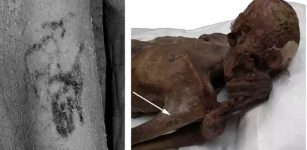 World’s Oldest Tattoos Discovered On Egyptian Mummies Re-Write History Of Tattoos
Archaeology | Mar 2, 2018
World’s Oldest Tattoos Discovered On Egyptian Mummies Re-Write History Of Tattoos
Archaeology | Mar 2, 2018 -
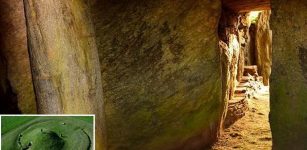 5,000-Year-Old Bryn Celli Ddu Funeral Complex Reveals More Secrets
Archaeology | Jun 28, 2017
5,000-Year-Old Bryn Celli Ddu Funeral Complex Reveals More Secrets
Archaeology | Jun 28, 2017 -
 Is ‘Someone’ Regularly Altering The Course Of History? – Is So How, Why And Who? Part 1
Featured Stories | Nov 30, 2020
Is ‘Someone’ Regularly Altering The Course Of History? – Is So How, Why And Who? Part 1
Featured Stories | Nov 30, 2020 -
 Why Are There No Unicorn Fossils In A Museum?
Archaeology | Mar 17, 2023
Why Are There No Unicorn Fossils In A Museum?
Archaeology | Mar 17, 2023 -
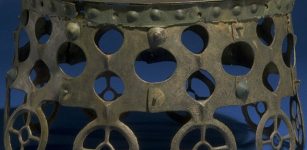 Mysterious Balkåkra Disc – Rare Strange Bronze Artifact Found In A Bog
Artifacts | Jul 25, 2019
Mysterious Balkåkra Disc – Rare Strange Bronze Artifact Found In A Bog
Artifacts | Jul 25, 2019 -
 First Known Depiction Of The Biblical Heroines Deborah And Jael Unearthed On 1,600-Year-Old Mosaics
Archaeology | Jul 6, 2022
First Known Depiction Of The Biblical Heroines Deborah And Jael Unearthed On 1,600-Year-Old Mosaics
Archaeology | Jul 6, 2022 -
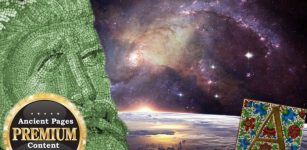 Riddle Of An Ancient Underground City No-One Thinks Exist – Symbol For A Spiritual Quest – Part 2
Featured Stories | Sep 18, 2019
Riddle Of An Ancient Underground City No-One Thinks Exist – Symbol For A Spiritual Quest – Part 2
Featured Stories | Sep 18, 2019 -
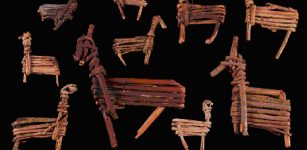 Tusayan Pueblo Ruins And Split Twig Figurines Tell Story Of People Who Once Inhabited The Grand Canyon
Civilizations | Nov 13, 2018
Tusayan Pueblo Ruins And Split Twig Figurines Tell Story Of People Who Once Inhabited The Grand Canyon
Civilizations | Nov 13, 2018 -
 Delphic Mysteries – Extraordinary Encounter At An Ancient Temple – Part 2
Featured Stories | Apr 3, 2023
Delphic Mysteries – Extraordinary Encounter At An Ancient Temple – Part 2
Featured Stories | Apr 3, 2023 -
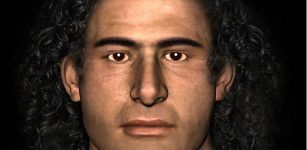 DNA Analysis Shows Griffin Warrior Ruled His Greek Homeland
Archaeology | Aug 26, 2022
DNA Analysis Shows Griffin Warrior Ruled His Greek Homeland
Archaeology | Aug 26, 2022 -
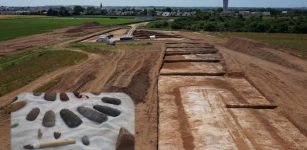 Ancient DNA Unravels The Mystery Of Huge 6,500-Year-Old Cemetery And The Tomb Of A ‘Masculine Woman’ In Normandy, France
Archaeology | May 5, 2022
Ancient DNA Unravels The Mystery Of Huge 6,500-Year-Old Cemetery And The Tomb Of A ‘Masculine Woman’ In Normandy, France
Archaeology | May 5, 2022 -
 Curse Of Evil Eye: Powerful Ancient Belief That Still Frightens People Around The World
Featured Stories | May 9, 2017
Curse Of Evil Eye: Powerful Ancient Belief That Still Frightens People Around The World
Featured Stories | May 9, 2017 -
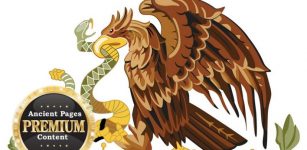 Deception And Hidden Truth – Ancient Struggle Of The Eagle And Serpent – Part 2
Ancient Symbols | Sep 6, 2019
Deception And Hidden Truth – Ancient Struggle Of The Eagle And Serpent – Part 2
Ancient Symbols | Sep 6, 2019 -
 5 Myths About The Amazons – Ancient Female Warriors
Featured Stories | Jan 13, 2016
5 Myths About The Amazons – Ancient Female Warriors
Featured Stories | Jan 13, 2016 -
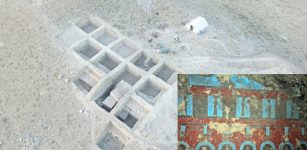 First Look At Mysterious 2,700-Year-Old Underground Frescoes Hidden Inside An Urartu Structure
Archaeology | Oct 6, 2022
First Look At Mysterious 2,700-Year-Old Underground Frescoes Hidden Inside An Urartu Structure
Archaeology | Oct 6, 2022 -
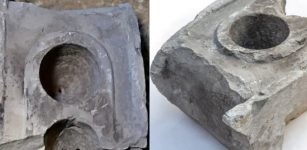 2,000-Year-Old Measuring Table With Stone Weights Unearthed In Jerusalem
Archaeology | Jan 16, 2020
2,000-Year-Old Measuring Table With Stone Weights Unearthed In Jerusalem
Archaeology | Jan 16, 2020 -
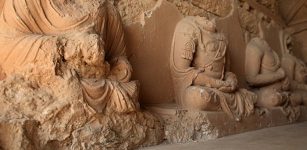 Takshashila: Renowned Learning Center That Attracted Buddhist Masters, Disciples And Students Of The World
Featured Stories | Jul 23, 2016
Takshashila: Renowned Learning Center That Attracted Buddhist Masters, Disciples And Students Of The World
Featured Stories | Jul 23, 2016 -
 Viking Grave And Sword Discovered In Norwegian Garden
Archaeology | Jul 3, 2023
Viking Grave And Sword Discovered In Norwegian Garden
Archaeology | Jul 3, 2023 -
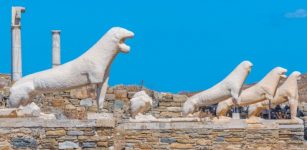 Archaic Marble Lions On The Sacred Island Of Delos
Artifacts | Feb 27, 2021
Archaic Marble Lions On The Sacred Island Of Delos
Artifacts | Feb 27, 2021 -
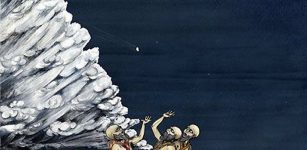 Controversial 5,500-Year-Old Sumerian Star Map Of Ancient Nineveh Reveals Observation Of Köfels’ Impact Event
Artifacts | Dec 28, 2018
Controversial 5,500-Year-Old Sumerian Star Map Of Ancient Nineveh Reveals Observation Of Köfels’ Impact Event
Artifacts | Dec 28, 2018



